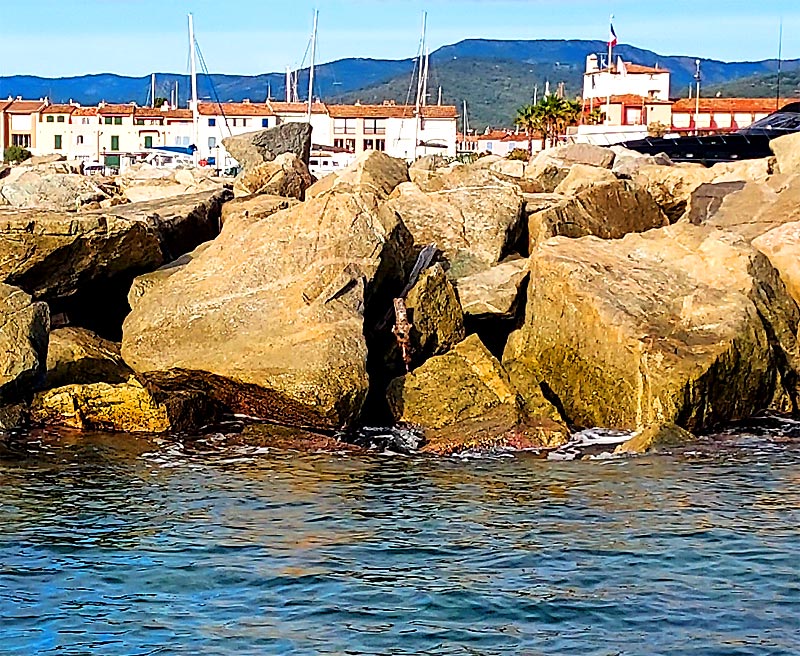
AQUATIC LIFE in Port Grimaud :
Natacha LAMY, a doctor in marine biology and a resident of the lakeside town since 2023, is fascinated by what goes on underwater, an aquatic life that exists without us even realising it, a life that came into being thanks to the creation of the jetties at the entrance to the town. A life that has settled on the riprap and thanks to the riprap to offer itself a living environment and a peaceful existence sheltered from the gaze and ignorance of humans. A life that is now part of the long history of the lakeside town. This page is dedicated to his research, which deserves to be known by residents : 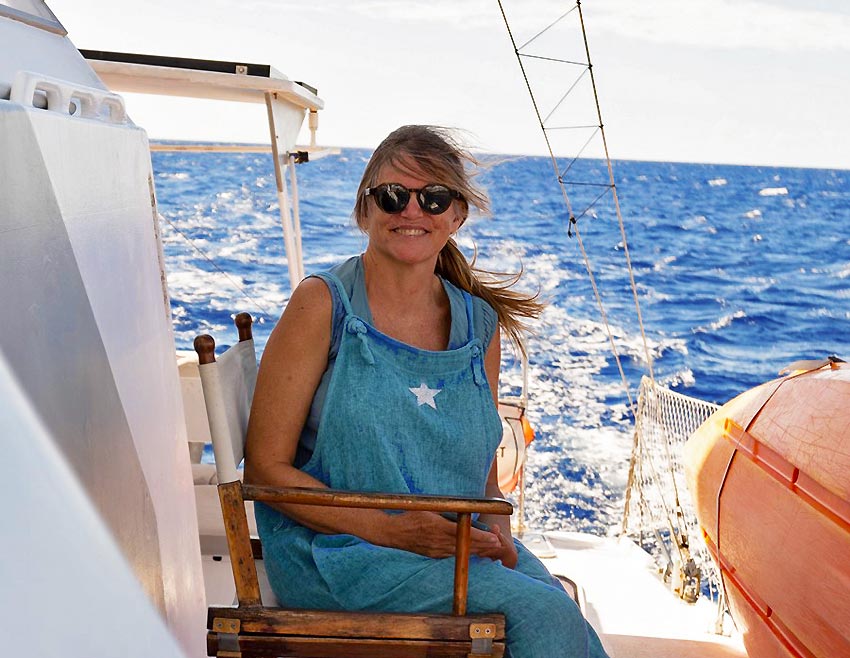
Natacha presents her underwater activity, observing, discovering and photographing the underwater life that has taken over the rocks of the large jetty at the entrance to the city : Presentation :" Let me start by introducing myself. I've been swimming with a mask and fins since I was a kid. A few years ago, I bought a little underwater camera and a red buoy that I carry around behind it to mark my position. I love going along the coast. I wrote my thesis on the organisation of macrobenthic communities in an oyster bed in the Etang de Thau (Hérault). The macrobenthos is everything that lives on the seabed and is visible to the naked eye. So I'm a benthologist.
After the Hérault, I lived with my little family in Guadeloupe. Over there, I had a great time on the coral reefs and with the sea turtles, which don't belong to the Benthos, of course. Since then, I've kept a close eye on the sands of Port Grimaud, hoping one day to see their characteristic tracks again; As I get bored in front of the beach, I had the idea of regularly exploring the jetty. All in all, it makes sense to me, as the pier is made up of upright hard substrates and sand at the foot… The pier is therefore made up of blocks of poured concrete and granite. These hard substrates provide a large surface area for colonisation (algal felting and encrusting coralligenous). There is a very important thesis that has enabled me to confirm what I was seeing: that of Sandrine Ruitton, Professor at the Université de la Méditerranée: ‘Les communautés benthiques et nectobenthiques associés aux aménagements littoraux en Méditerranée nord-occidentale. Structure et fonctionnement’, 1999. The stacking of boulders here creates a variety of depths, habitats and shelters or refuges (in the interstices) for benthic invertebrates and fish. The populations of these blocks are dominated by grazers or scrapers, such as sea urchins, limpets, purpins, juvenile saupes and other benthophagous fish (sars, etc.). In the vicinity of this jetty, we can also observe planktonophagous open-water fish (joels, oblades…), always attracted by a wealth of particles and organic matter in the water column. There are also predators, such as wolves. At the foot of the jetty, sand and mattes are home to red mullet and rock bass. In many fish species, juveniles and adults live together. They are then considered to be in a recruitment phase. Looking at the Gulf of Saint Tropez alone, the anthropogenic (human) pressures on all the marine waters of the Gulf are numerous. They affect the benthic populations, those of the rocky and soft bottoms, which are altered. And also on the Posidonia in the open sea. The current bio-colonisation seen on the blocks is the same age as the jetty: a wonderful balance has been achieved over 50 years... The jetty and the canals are a great nursery. There will be nothing to eat for a very long time if we destroy this jetty. the pier is alive, an oasis...
There are lots of juveniles, in the company of adults... This means that recruitment is a fact, and that's important, because populations are renewed The balance observed to date at the jetty remains fragile, at the mercy of disruption when the source populations can no longer produce larvae. In addition, natural areas on all coasts are fragmented and species with a low dispersal capacity can have problems. So this breakwater at the very bottom of the gulf is an opportunity for restocking because it is conducive to recruitment. Let's discover these little animals together… : 

The BLENNIES :Benthic fish are those that live on or near the seabed (benthos refers to the nekton or plankton in the water column).. " They are small benthic fish with a fin on their back. They are opportunists because they ‘comb’ wide, or rather they eat what they find! A bit of everything... Seaweed, crustaceans, molluscs, etc..." 5 photos to discover these blennies : 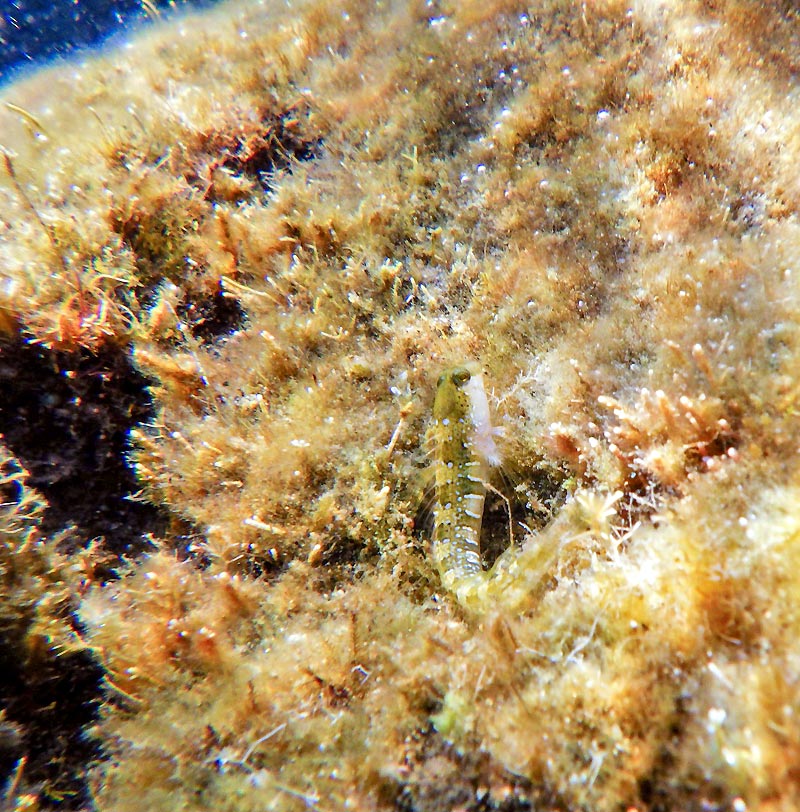
Blennie dalmate 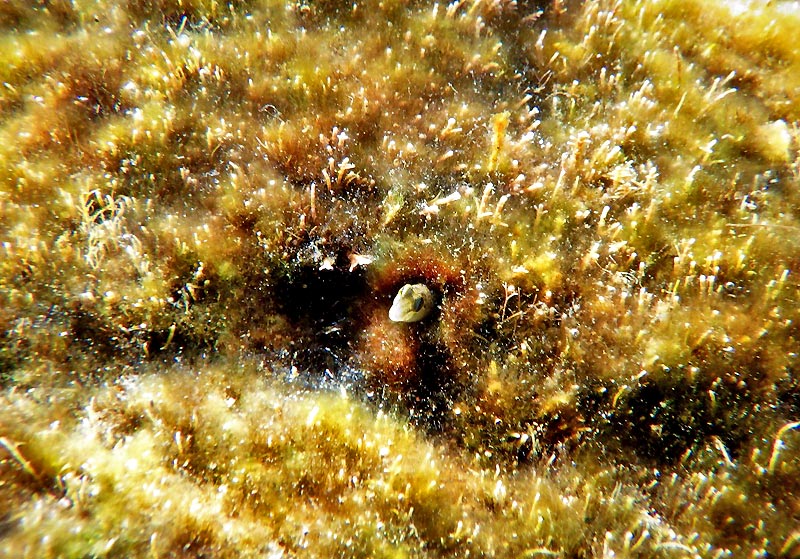
Dalmatian blennie in its hole 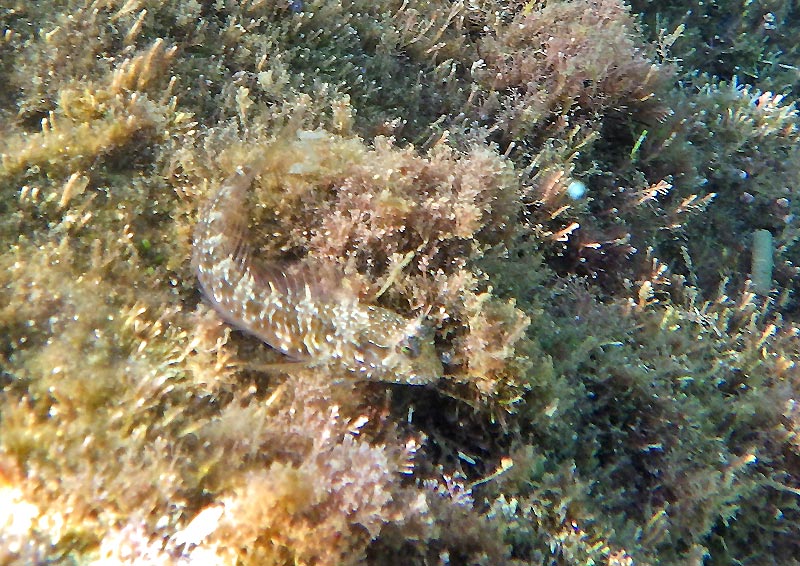
Blennies diabolo 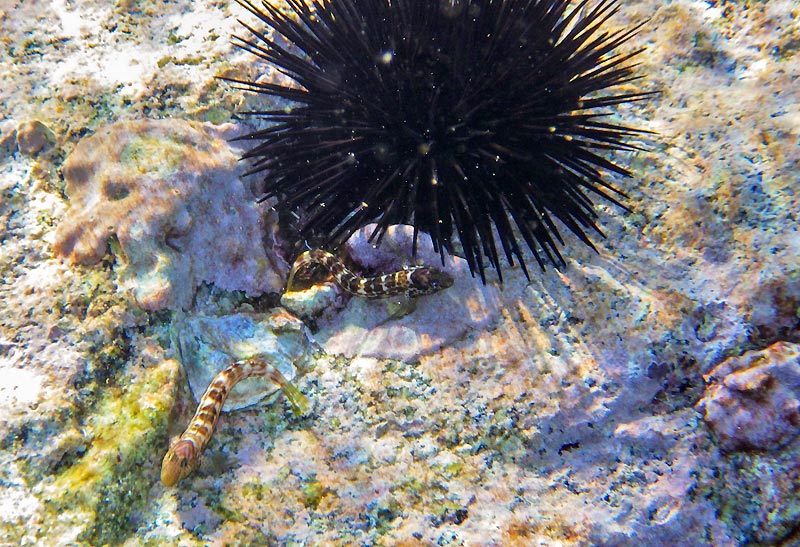
Blennie from Caneva 
Blennie-sphinx 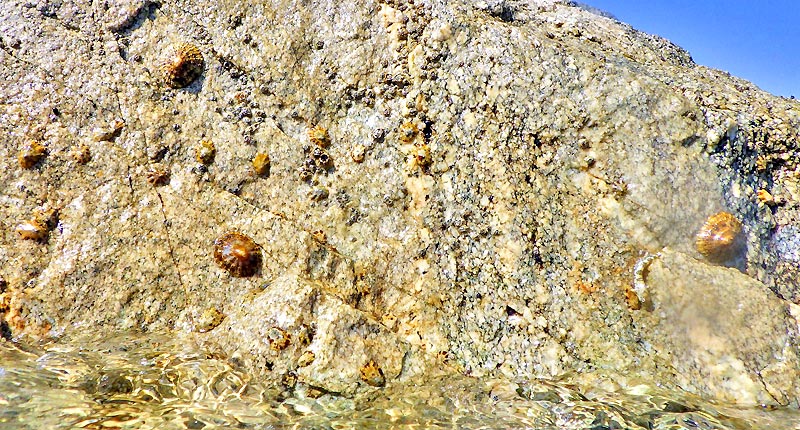
Palelles, burdocks and blennies 
The TRYPTERYGIONS :BR> " Two species of Tryptérygion can be found in the rocks along the pier: the yellow Tryptérygion (Tripterygion delaisi) and the red Tryptérygion (Tripterygion tripteronotum) and the red Tryptérygion (Tripterygion tripteronotum.)Yellow’ females have a dark black bar at the base of their tail, while “red” females have a bar similar to the others. To quickly differentiate Tryptérygions from Blennies in the water, I call them ‘Pointed Snouts’! These sedentary fish have three fins. They feed on small crustaceans and planktonic micro-organisms..." 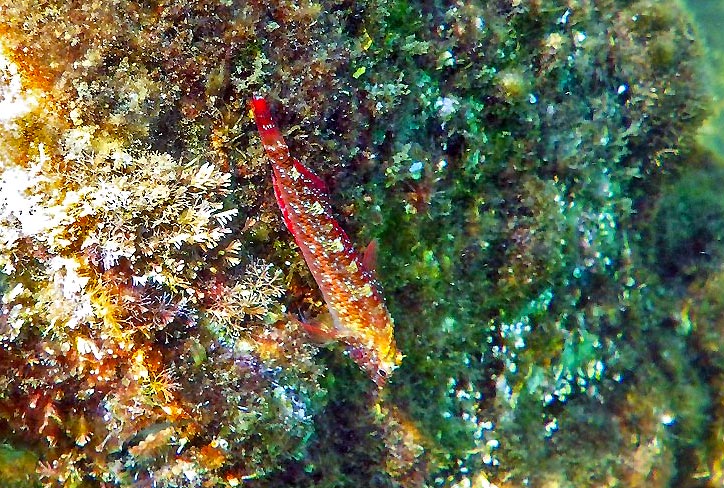
A Female ‘red’ trypterygium 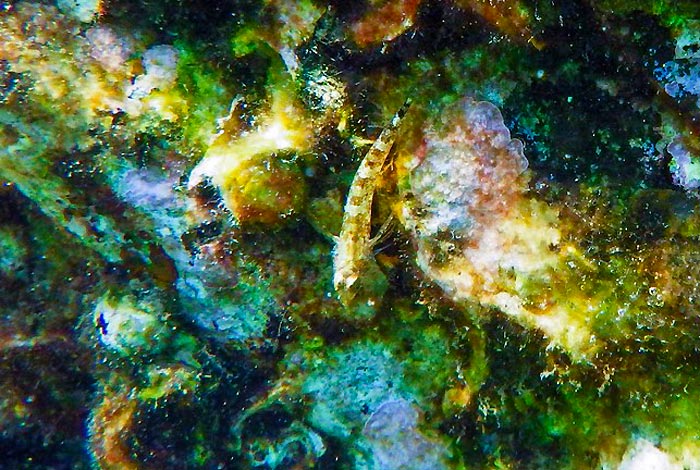
A female ‘yellow’ Tryptérygion 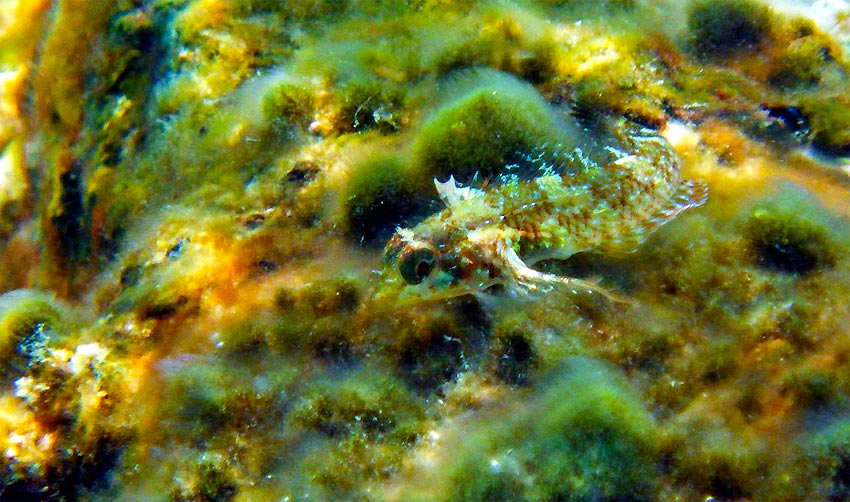
Other Trypterygium 
Other species :" I often come across these three species, which are more or less the same size, at the foot of the pier or near it, and they have different feeding strategies " : - The Crenilabre-paon swallows invertebrates with a mouthful of algae. - The Barbarin (or red mullet) digs in the sand for worms and crustaceans. - The Serran écriture (recognisable by the lines drawn on its head) stalks to catch small fish, crustaceans or molluscs. 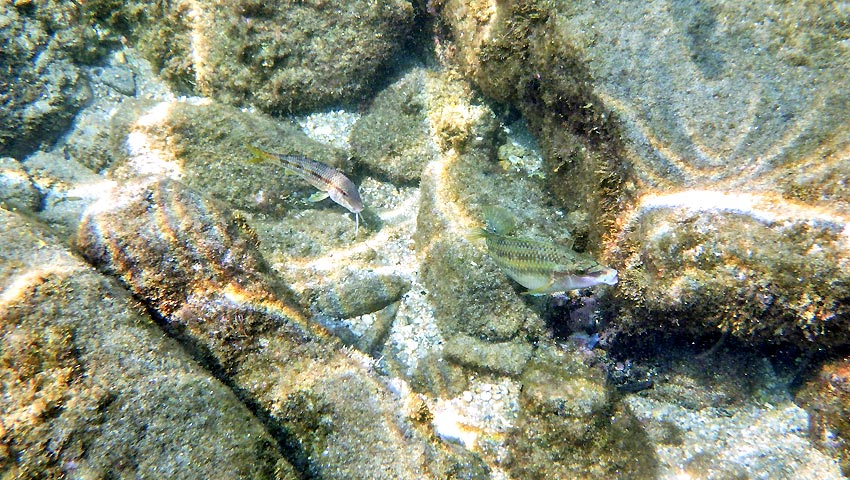
The Crénilabre-paon and the Barbarin 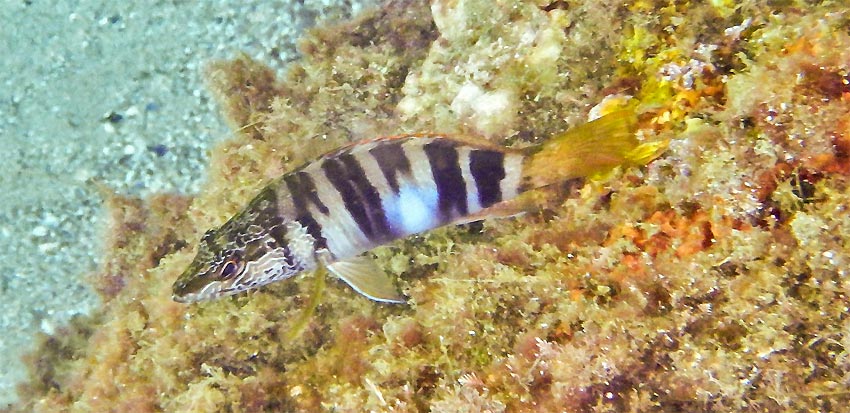
The Serran écriture 
the kings of camouflage :Natacha LAMY doesn't dive in all weathers " I need sunshine and clear, calm waters for my photos " she explains : " The kings of camouflage are fish that she has spotted in the water of our canals, ‘ Fish that hunt on the lookout, that blend in with the environment... Difficult to flush out " : The Gobie moucheté (with its V-shaped “snout” line) The Gobie céphalote (with his big head) The Brown scorpion fish Mediterranean rhombou (flatfish) 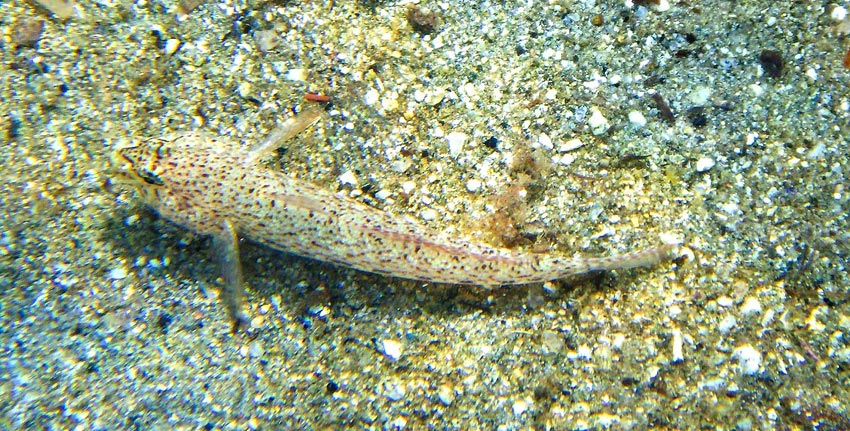
The Gobie moucheté 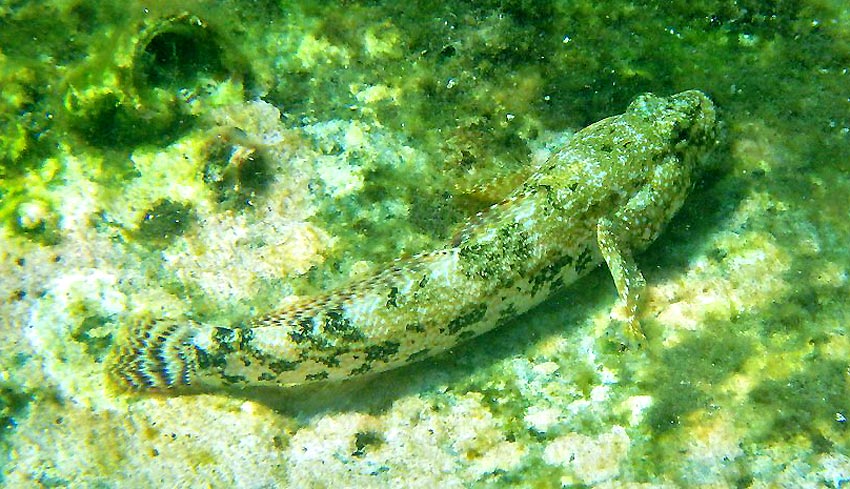
The Gobie céphalote 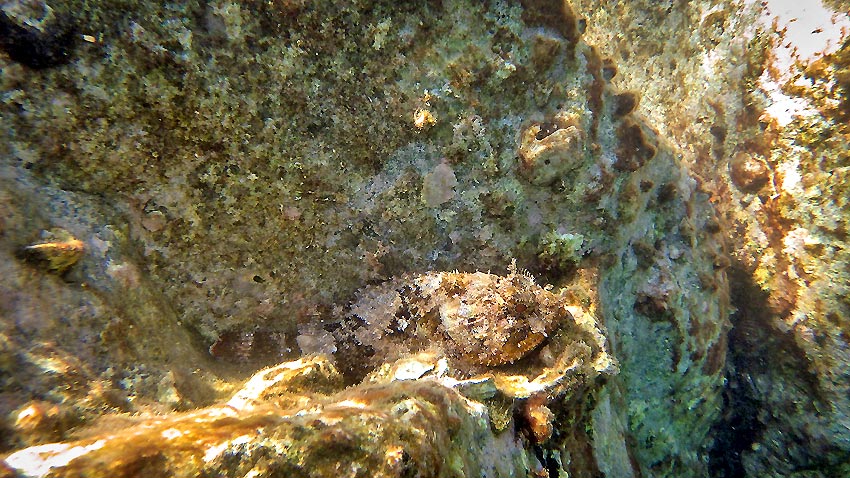
Brown scorpion fish 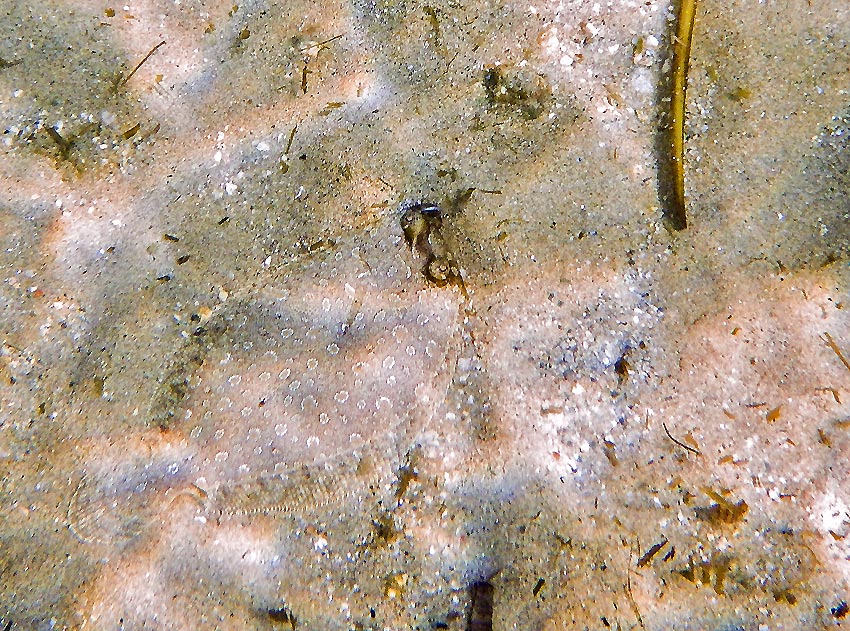
The Mediterranean rhombou 
They enjoy our canals :Some fish " enjoy our canals... " : - The gilthead sea bream "(recognisable by the bar on the operculum and the golden band on the forehead) is a crusher of shells and carapaces", - Sars "have well-developed teeth and a slightly protruding mouth* for catching prey", - The sea bass, "very shy and solitary... It is a good indicator of the quality of coastal marine ecosystems"... ( * Protractile; Refers to an organ that elongates of its own accord. (By extension) Mouth of certain fish (mainly bottom-dwelling fish) that can elongate forwards and then retract, making it possible to poke around in sand and sediment..) 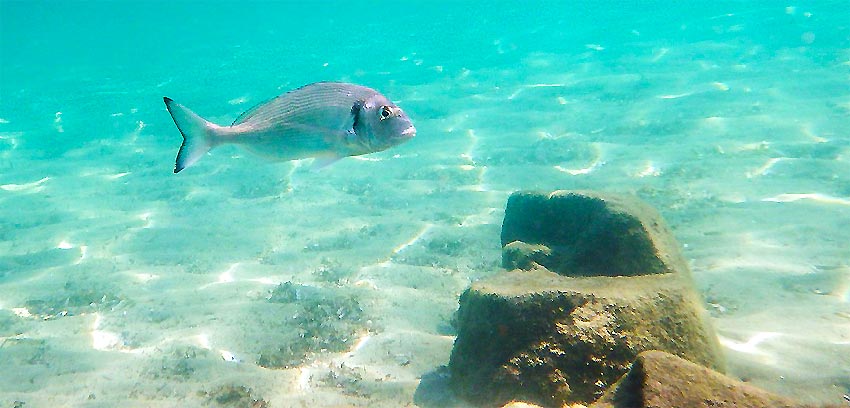
The gilthead sea bream 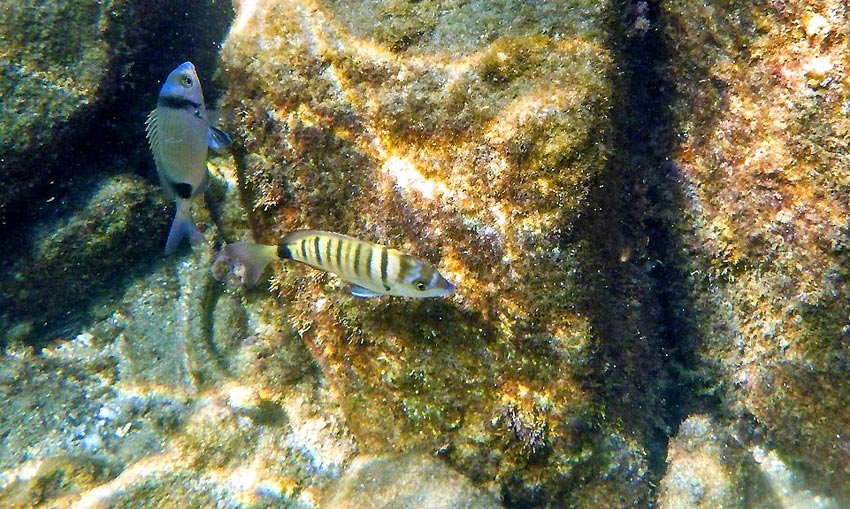
The Sar 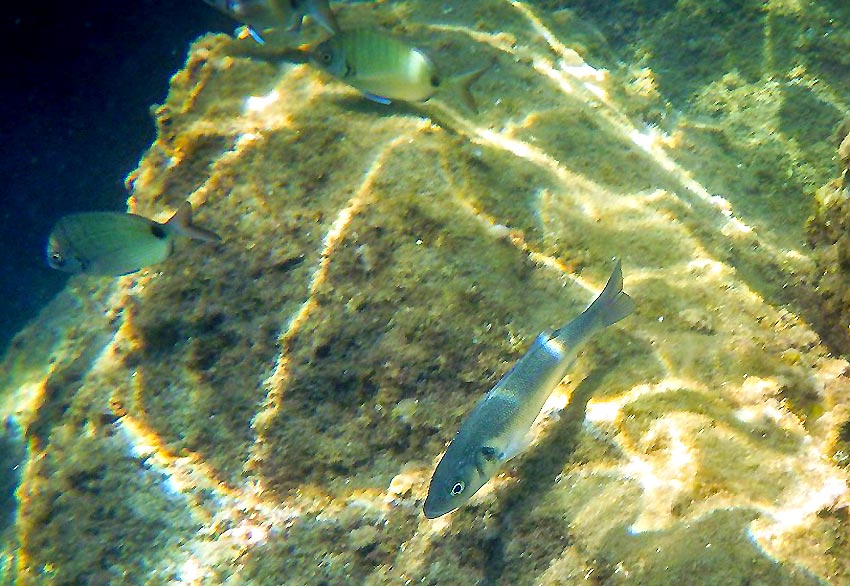
The sea bass 
Predators and carnivores :In ecology, predators are those that hunt, whether lying in wait or not, and catch animal prey smaller than themselves... " Predators, or carnivores, include sea bream, sea bass, gilthead seabream (adults), molluscs such as the bloody purple and the fasciated rock and, of course, cuttlefish... And the comb star." 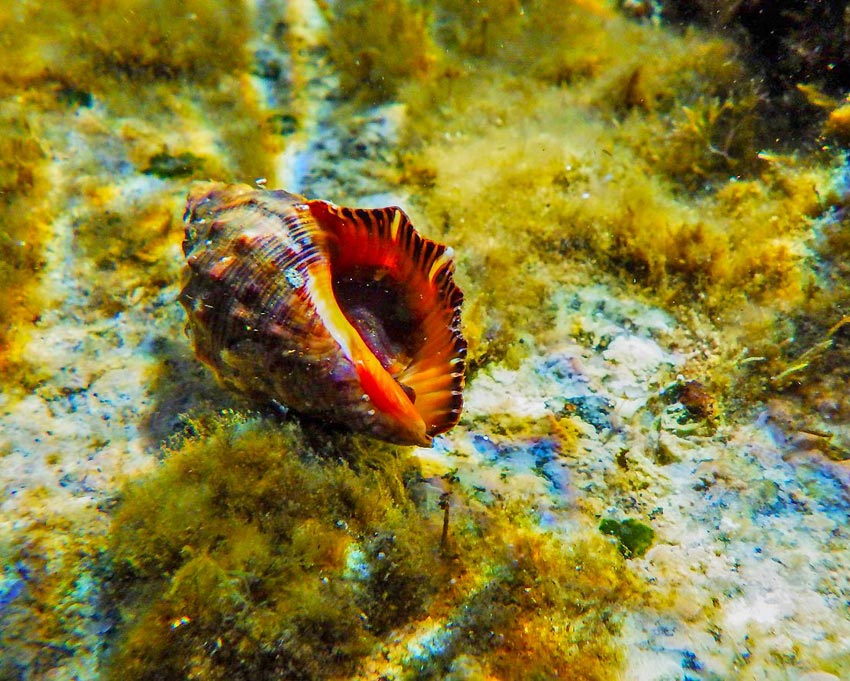
Le Pourpre bouche de sang 
La Seiche commune 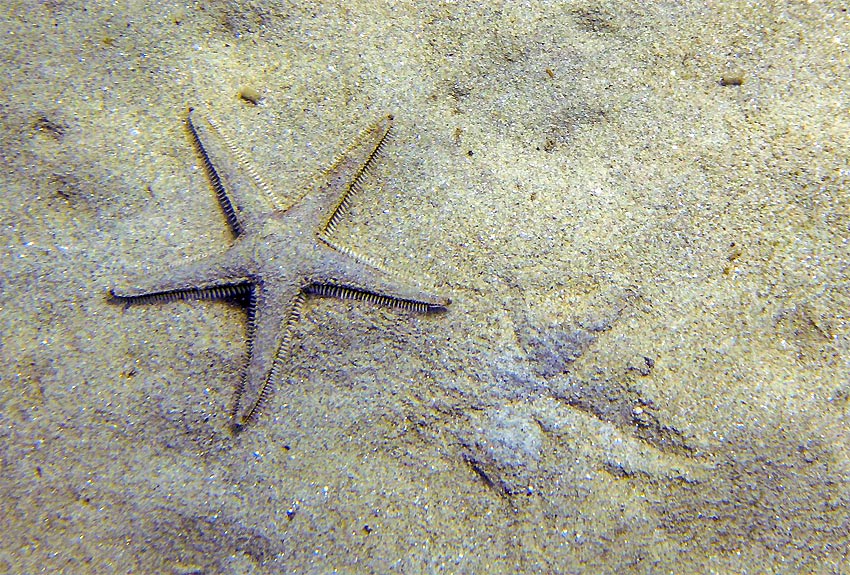
L'Etoile Peigne 
Interstitial spaces :" Before going on to other species and invertebrates, here are some photos of the interstitial spaces between the blocks... The surfaces have been colonised over time, since the creation of the jetty... There are those that are directly exposed to the currents and waves, and then there are the interstices that provide shelter for fauna and algae... All these surfaces are a source of food for the animals' diet " : 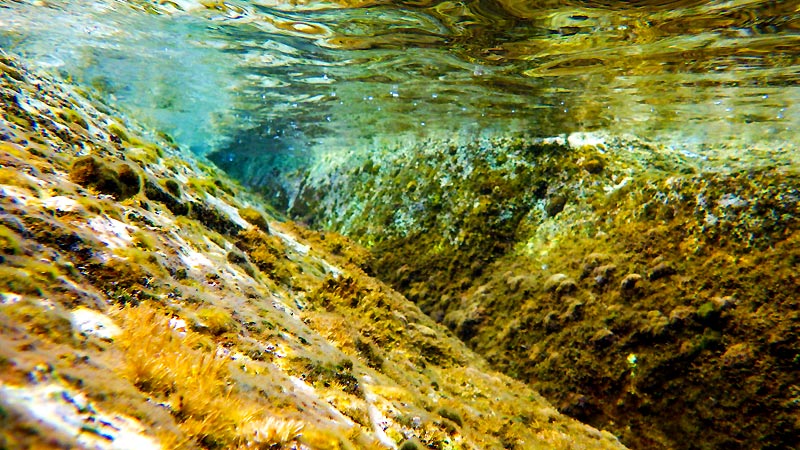
The underwater part of the pier 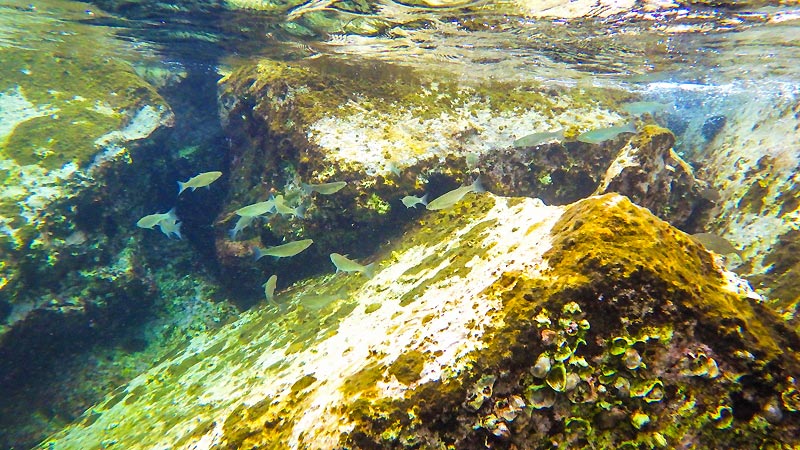
Other view... 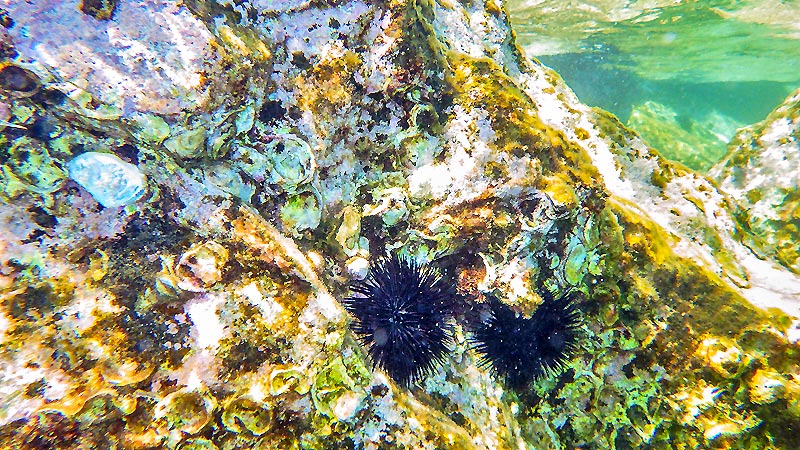
Other view... 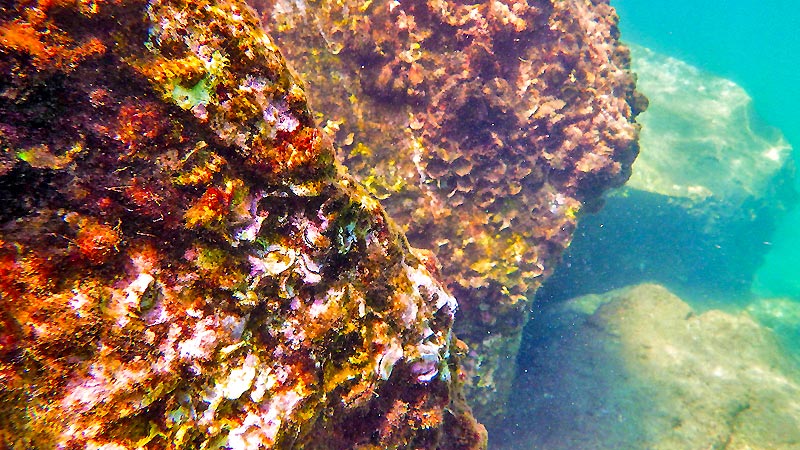
Other view... 
Aquatic beauty... 
 Gregarious fish :Gregarious fish are varieties that live close to the jetty, grouping together. Wolffish hunt alone. Saups gather in shoals. " The mullets we see in the canals feed on algae and small invertebrates... Golden mullets like rocks, lagoons and estuaries (but not freshwater). Spoonbills are the most common at sea. Their young enter lagoons, estuaries and sometimes freshwater... Saupes graze on seaweed. From the seabed to the surface: The marbled shark lives exclusively on the sandy seabed and the Oblade in open water, but close to the rocky seabed and seagrass beds " : 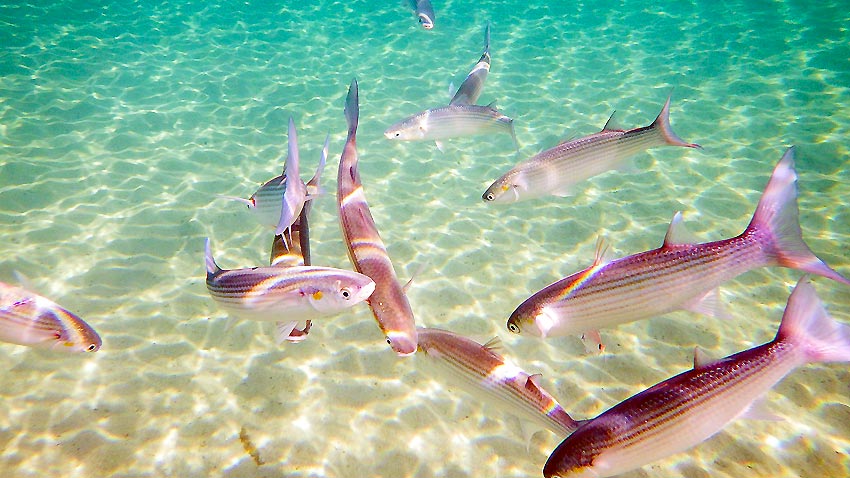
Golden mullets 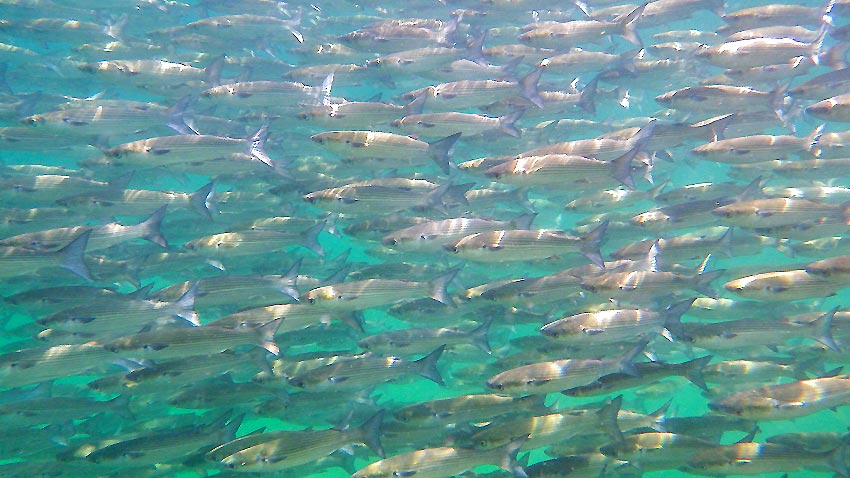
Spoonbills 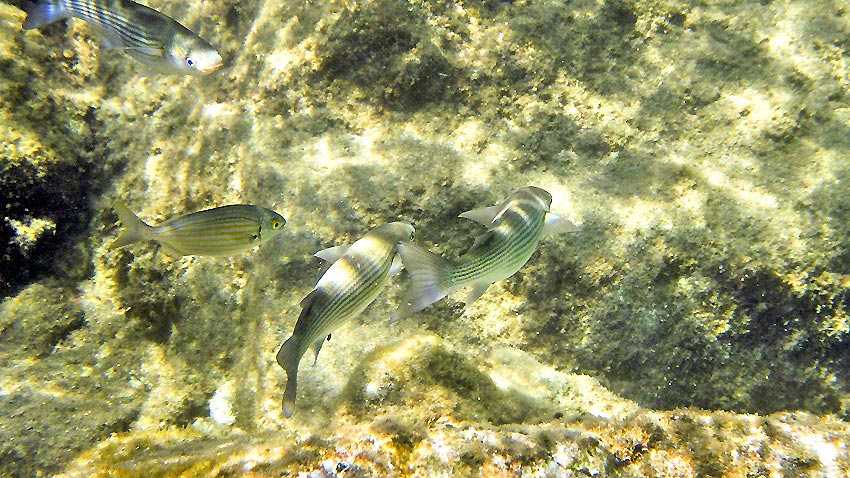
Saupes 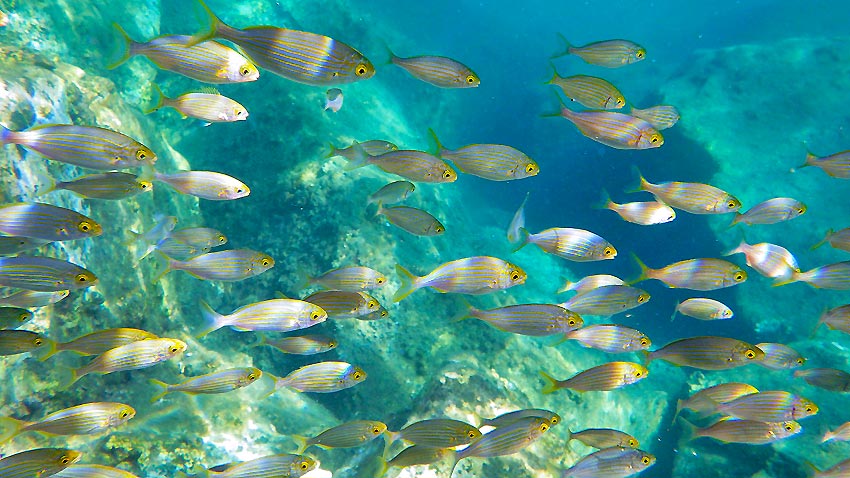
Saupes 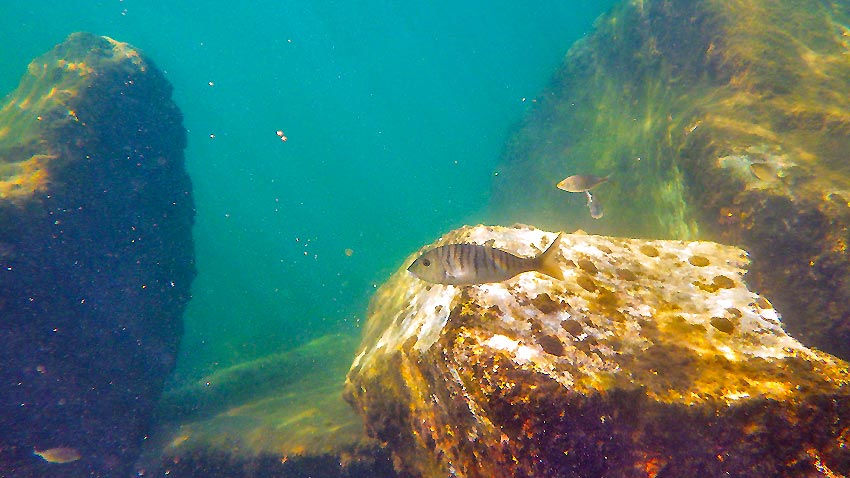
marbled shark 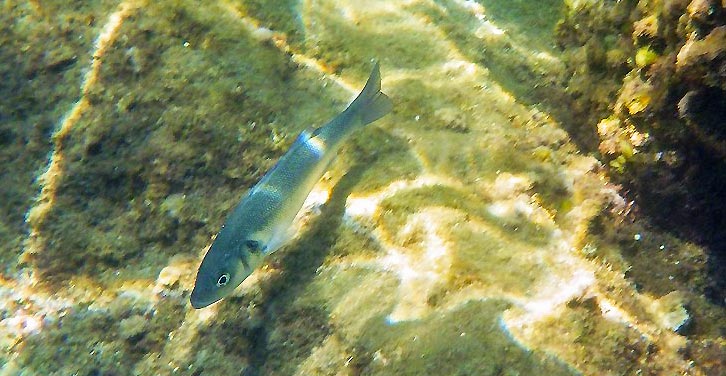
Wolffish 
Grazers :"The most abundant grazers here are black sea urchins, blue limpets and gibbous toupies... Look closely at the photos... You can see the purple marks left behind by the limpets after grazing. And the limit of extension of the algal felting in front of the sea urchins and limpets."... : 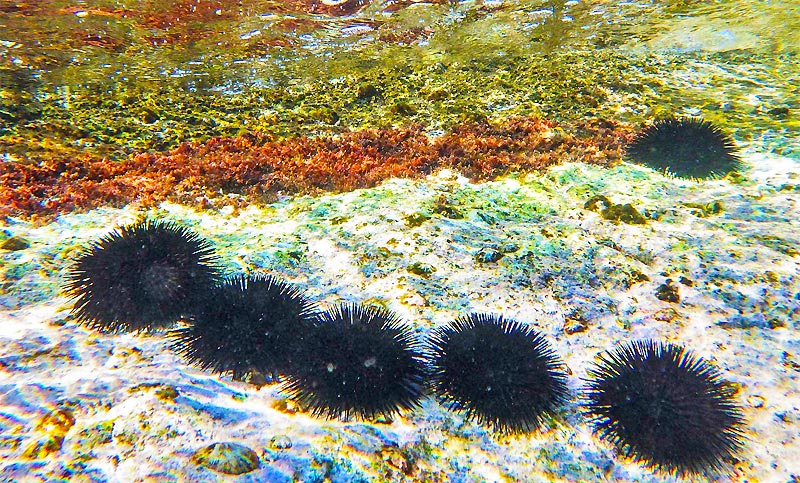
Black sea urchins 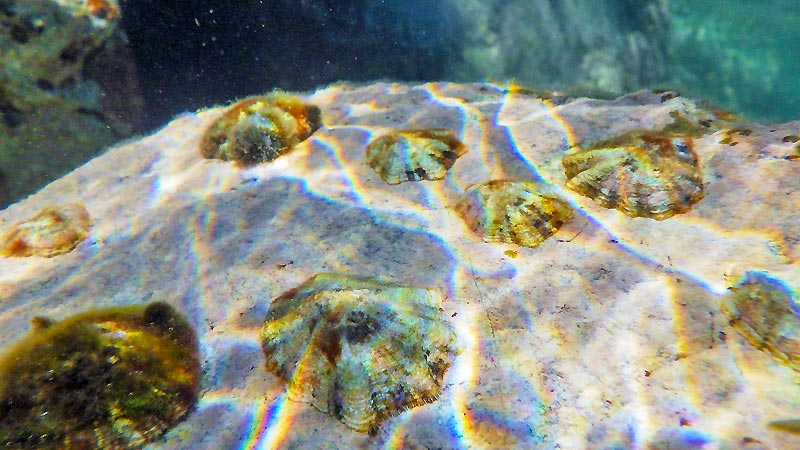
Blue limpets 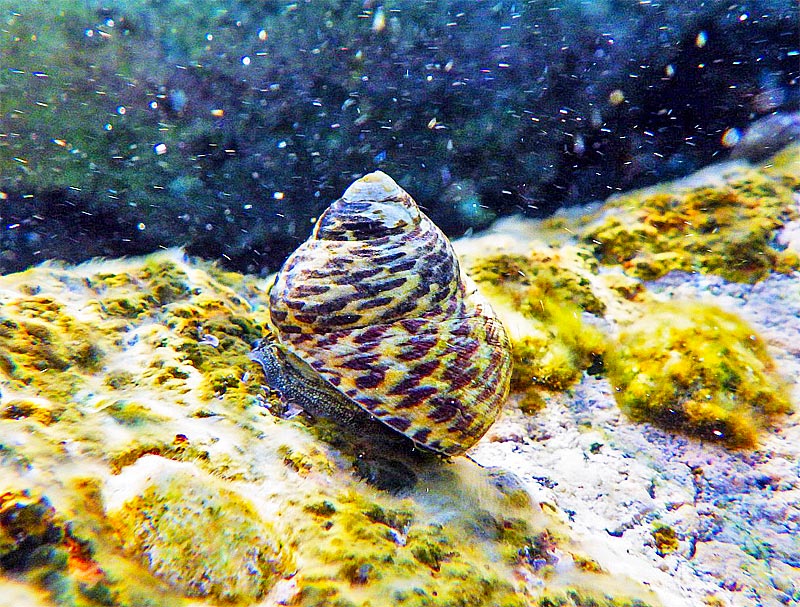
Gibbous toupies 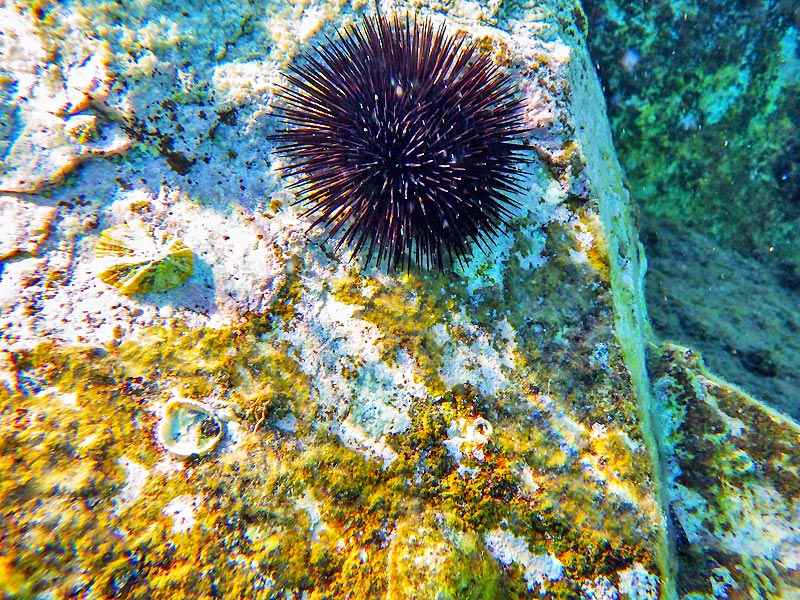
Sea urchin and limpet 
Les Cnidaires... :" Among the Cnidaria, we note the presence of the Green Aiptasia, the Mooring Hydraria and, carried along by the currents, the beach-goers' favourite, the Pelagia noctiluca (the pelagic jellyfish). ..."... 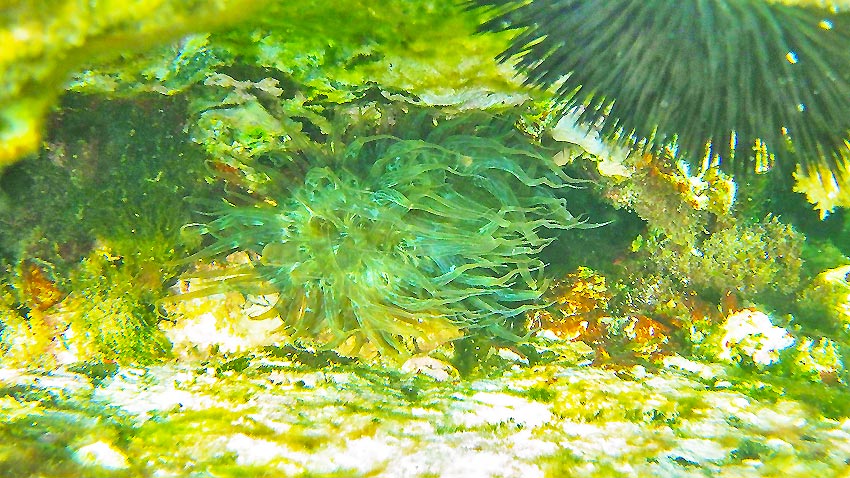
Green Aiptasia 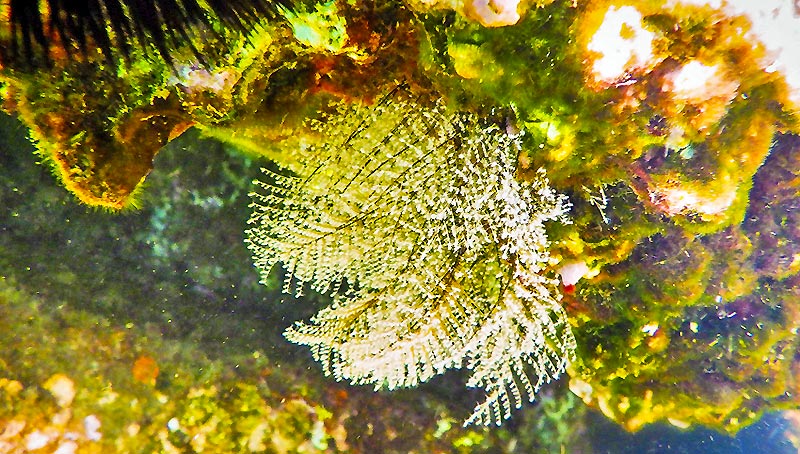
Mooring Hydraria 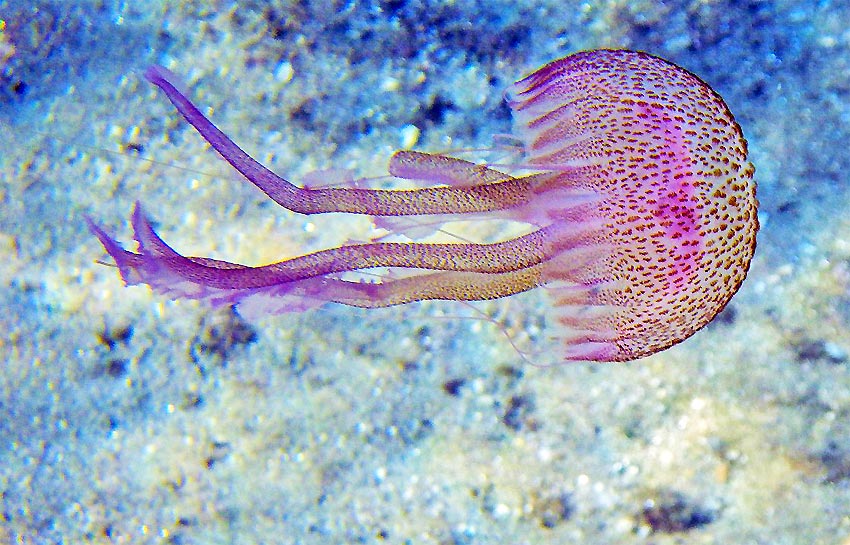
Pelagic jellyfish 
The filterers... :Filter feeders feed on very small organisms. They are sometimes also called suspension feeders. They are equipped with a system that filters the water to capture only the micro-organisms. Natacha introduces us to the filter feeders she spotted on the large pier : " The flat oyster, Ostrea edulis, whose ‘status is a cause for concern, as it plays a major ecological role in the areas where it becomes established: it has been described as an “ingenious” species because of its ability to colonise the seabed and thus create a favourable environment for the development of other marine species’ (pecheapied-loisir)... Tube worms, such as Sabella and sprirorbia... The Crambe crambe sponge, which can cover itself with the shells of molluscs such as Arca noae, Noah's Ark... In this case, if you get too close, the Ark closes and the sponge moves ! "... 
The flat oyster 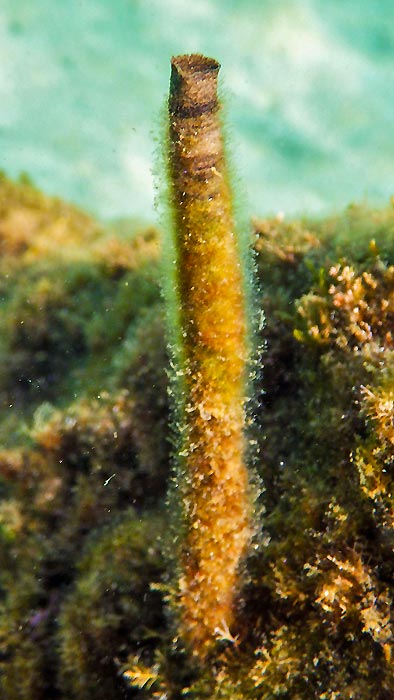
Sabella 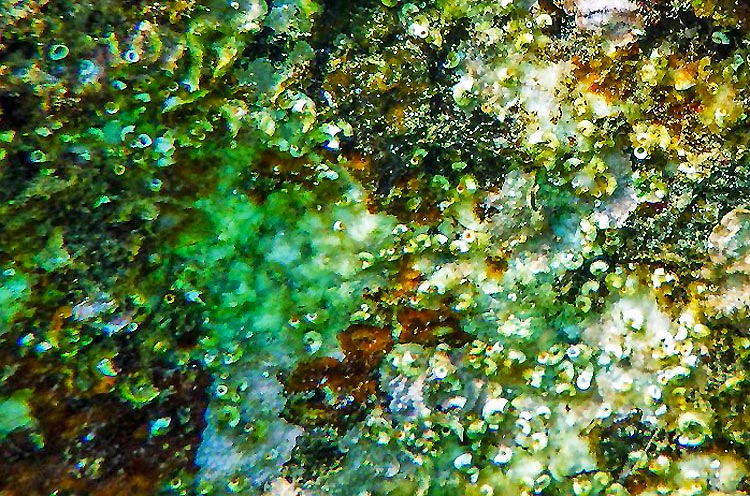
Sprirorbia 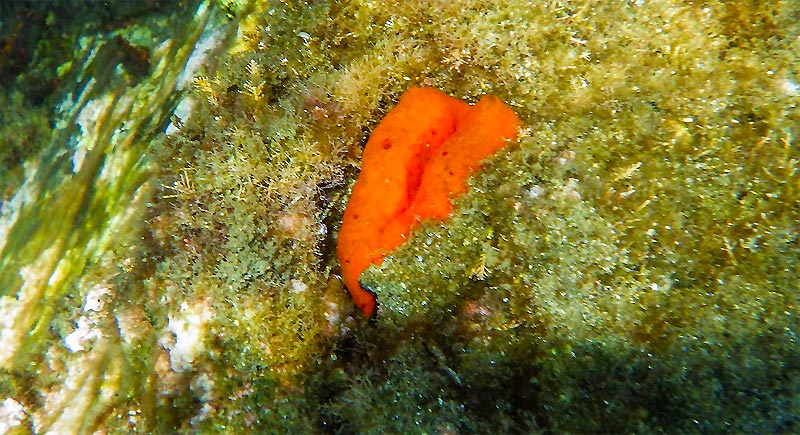
Crambe crambe sponge 

|
© Yves Lhermitte 2024 Reproduction prohibited without permission...

